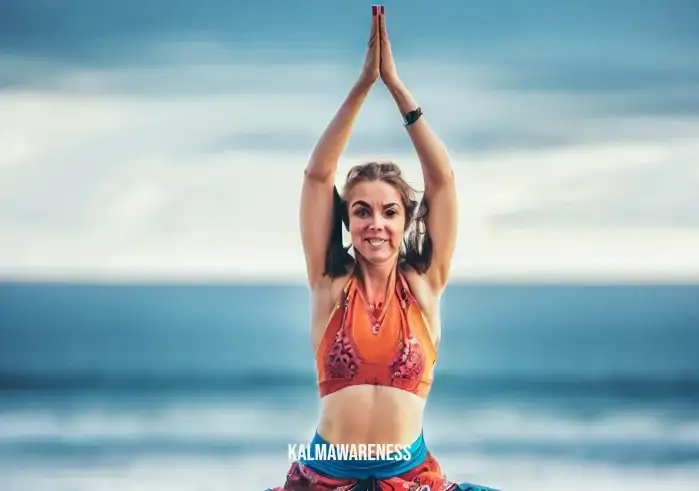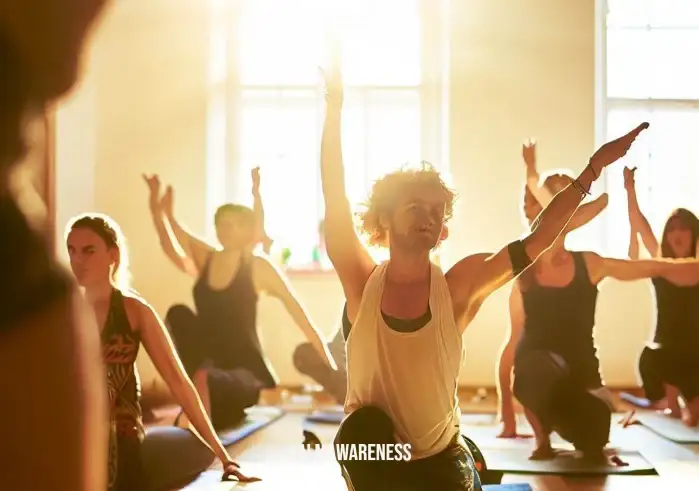Yoga Crow Pose Variations: Unleash Your Inner Strength and Balance
Experience the power of yoga crow pose variations and elevate your practice to new heights.
Introduction
Welcome to the world of yoga crow pose variations! In this article, we will explore different variations of the crow pose, a challenging yet invigorating yoga posture that combines strength, balance, and focus. Whether you’re a seasoned yogi or a beginner on your yoga journey, these variations will help you enhance your practice and take your skills to the next level.
Pose Description and Explanation
| Description | Explanation |
|---|---|
| Pose Name | Yoga Crow Pose Variations |
| Original Name | Kakasana |
| Difficulty Level | Intermediate |
| Pose Category | Arm Balancing |
| Exercise Duration | Beginners: 30-60 seconds |
| Advanced: 60-90 seconds |
Benefits of Crow Pose Variations
Before we dive into the step-by-step instructions, let’s explore the incredible benefits that practicing crow pose variations can bring to your body and mind. These variations are not only physically empowering but also offer a sense of mental focus and stability.
- Strengthens the Core: Yoga crow pose variations engage the abdominal muscles, including the deep core muscles, promoting a strong and stable core.
- Builds Arm and Shoulder Strength: By bearing weight on your hands, crow pose variations strengthen your arms, wrists, and shoulders, increasing upper body strength.
- Improves Balance and Concentration: Balancing your body on your hands challenges your coordination and concentration, fostering mental focus and mindfulness.
- Enhances Flexibility: Regular practice of crow pose variations increases the flexibility of your hip flexors, groin, and inner thighs.
- Boosts Self-Confidence: Successfully holding these challenging poses builds confidence as you overcome fears and limitations, both on and off the mat.
In the next part of this article, we will dive into the step-by-step instructions for practicing the yoga crow pose variations. Get ready to spread your wings and soar!
Continue reading to explore the step-by-step instructions for yoga crow pose variations and unlock your inner strength and balance.

Unlocking the Potential: Benefits and Variations of Yoga Crow Pose
In the previous chapter, we explored the introduction and basic information about yoga crow pose variations. Now, let’s delve deeper into the benefits of this empowering pose, as well as who can benefit from it and variations suitable for different levels of experience.
Benefits of Yoga Crow Pose Variations
Yoga crow pose variations offer a wide range of benefits that extend beyond just physical strength. Here are some of the key advantages you can gain from practicing these invigorating variations:
- Core Strength and Stability: By engaging the deep core muscles, such as the transverse abdominis and obliques, crow pose variations help to strengthen and stabilize the entire midsection.
- Upper Body Toning: The weight-bearing nature of these poses targets the arms, wrists, and shoulders, sculpting and toning the upper body muscles.
- Improved Balance and Coordination: Balancing on your hands challenges your proprioception and coordination skills, enhancing overall balance and body awareness.
- Enhanced Concentration: The focus required to maintain these challenging poses cultivates mental concentration and sharpens your ability to stay present in the moment.
- Mind-Body Connection: Practicing yoga crow pose variations encourages a deep connection between your mind and body, fostering a sense of unity and mindfulness.
- Increased Confidence: As you gradually build strength and master these demanding poses, your self-confidence and belief in your capabilities will soar.
Suitability and Precautions
While yoga crow pose variations offer numerous benefits, it’s important to consider individual abilities and any contraindications. Here’s a brief overview of who can benefit from these variations and who should approach them with caution:
Suitable for:
- Intermediate to advanced yoga practitioners looking to enhance their arm balancing skills.
- Individuals with a strong foundation in arm strength and core stability.
- Those seeking to improve focus, balance, and overall body control.
Not recommended for:
- Beginners who are new to yoga or have limited upper body strength.
- Individuals with wrist or shoulder injuries or conditions.
- Pregnant women or individuals with high blood pressure.
- Those with recent surgery or any medical conditions that may be exacerbated by intense physical activity.
As always, it’s essential to listen to your body and consult with a qualified yoga instructor or healthcare professional before attempting any new poses, especially if you have pre-existing health concerns.
Variations for Different Levels
Now, let’s explore variations of yoga crow pose that cater to different levels of experience and ability. These modifications allow you to adapt the pose according to your current skill level, gradually building strength and proficiency.
- Beginner Variation: Start by practicing the foundational crow pose, focusing on mastering the proper alignment and distributing weight evenly through your hands. Use a bolster or folded blanket under your forehead for support if needed.
- Intermediate Variation: Once you feel comfortable with the basic crow pose, challenge yourself by lifting one foot off the ground while maintaining balance. Start with shorter holds and gradually work your way up to longer durations.
- Advanced Variation: For those with advanced arm balance skills, explore transitioning from crow pose to other arm balances, such as side crow or flying pigeon pose. These variations require greater strength, stability, and body control.
Remember, progression in yoga is a personal journey, and it’s crucial to honor your body’s limitations while still pushing yourself gently beyond your comfort zone.
Continue reading to discover the step-by-step instructions for each variation of yoga crow pose and unlock your full potential.

Part 3: Deepening the Practice: History, Spirituality, and Tips for Yoga Crow Pose Variations
In the previous chapters, we explored the introduction, benefits, suitability, and variations of yoga crow pose. Now, let’s delve further into the rich history and spiritual significance of this empowering pose, along with valuable tips for maximizing your practice, avoiding common mistakes, and incorporating complementary poses into your routine.
The History of Yoga Crow Pose Variations
Yoga crow pose variations have roots in ancient yoga traditions, specifically in the practice of Hatha Yoga. The original pose, known as Kakasana in Sanskrit, has been a part of yogic practices for centuries. Kakasana is derived from the words “kaka” meaning “crow” and “asana” meaning “pose” or “posture.”
Historically, crows have symbolized intelligence, fearlessness, and the ability to transcend limitations. Yogis observed the grace and agility of crows and sought to emulate their qualities through the physical expression of this pose. By imitating the crow’s steady balance and precise movements, practitioners aimed to cultivate mental focus and tap into their inner strength.
The Spiritual Significance of Yoga Crow Pose Variations
Beyond its physical benefits, yoga crow pose variations hold spiritual significance within the yogic tradition. Here are a few aspects that highlight the deeper meaning behind these poses:
- Svadhisthana Chakra Activation: Crow pose variations stimulate the energy center known as the Svadhisthana Chakra or the sacral chakra. This chakra is associated with creativity, passion, and emotional balance. Practicing these variations can help unlock and harmonize the flow of energy within this energetic center.
- Concentration and Mindfulness: The focused attention required to balance on your hands in crow pose variations helps quiet the mind and cultivate mindfulness. It serves as a reminder to stay fully present, letting go of distractions and cultivating a deeper connection with the present moment.
- Courage and Inner Strength: Embodying the qualities of a crow, practitioners are encouraged to embrace their inner courage and strength, both on and off the mat. Crow pose variations symbolize the willingness to take risks, face challenges, and explore uncharted territories.
Tips for Getting the Most Out of Yoga Crow Pose Variations
To deepen your practice and maximize the benefits of yoga crow pose variations, consider the following tips:
- Warm-up and Prepare: Prioritize a thorough warm-up that includes stretching and opening the wrists, shoulders, and hips. This will help enhance mobility and prepare your body for the demands of the pose.
- Engage the Core: Focus on engaging your core muscles throughout the pose. This will provide stability and support as you balance on your hands.
- Use Props for Support: If you’re still building strength or struggling with balance, use props like yoga blocks or a bolster for support. Place them under your forehead or between your knees to provide additional stability.
- Breathe Mindfully: Maintain steady and deep breaths while in the pose. This will help calm the mind, regulate your energy, and promote a sense of relaxation even amidst the physical challenge.
Common Mistakes to Avoid
While practicing yoga crow pose variations, be mindful of these common mistakes that can hinder your progress:
- Collapsing the Chest: Avoid rounding or collapsing your upper back and shoulders. Instead, focus on lengthening your spine and broadening through the chest.
- Gripping the Mat: Don’t grip the mat or overly tense your hands. Find a balance of strength and softness in your grip to maintain stability without unnecessary strain.
- Lack of Core Engagement: Neglecting to engage your core can make the pose feel unstable and put excess pressure on your wrists. Keep your core active throughout the practice.
Modifications for Injuries or Limited Flexibility
For individuals with injuries or limited flexibility, modifications can help make yoga crow pose variations accessible and safe. Consider the following adaptations:
- Knee Support: If you have knee discomfort, place a folded blanket or cushion under your knees when balancing on your hands.
- Wrist Support: If you experience wrist pain or strain, use yoga blocks or practice on your knuckles to reduce the pressure on your wrists.
- Wall Support: Start practicing near a wall to provide additional support and reassurance as you work on your balance and build strength.
Complementary Poses to Enhance Your Practice
To enhance your yoga crow pose variations and create a well-rounded practice, incorporate these complementary poses into your routine:
- Chaturanga Dandasana (Four-Limbed Staff Pose): This pose helps build strength in the upper body, particularly the arms and core, which are essential for maintaining stability in crow pose variations.
- Bakasana (Crane Pose): Bakasana is a natural progression from crow pose variations and further develops arm balance skills. It challenges your balance, strengthens your core, and enhances body control.
- Utthita Parsvakonasana (Extended Side Angle Pose): This pose stretches and strengthens the legs, hips, and side body, providing balance and flexibility that can benefit your overall yoga practice.
By incorporating these complementary poses, you can create a well-rounded and engaging practice that supports your growth and exploration in yoga crow pose variations.



